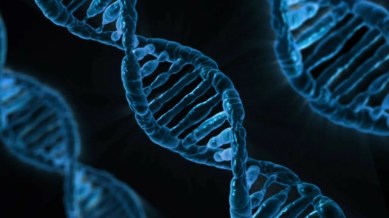IN A first, the government has undertaken a comprehensive scientific study using ancient and modern genomics to “conclusively” find the population history of South Asia, amid conflicting theories about the origin of ancient Indian communities.
The study is being undertaken through the Anthropological Survey of India (AnSI), which functions under the aegis of the Ministry of Culture.
Titled “Reconstruction of the population history of South Asia using ancient and modern genomics”, the project will study 300 ancient skeletal remains – largely cranial and other bone fragments, including tooth — collected from different archaeological sites in India and Pakistan.
These include remains collected during excavations carried out before and after Independence at Indus Valley Civilisation sites such as Harappa and Mohenjo-Daro (now in Pakistan), Burzahom (Jammu & Kashmir), Nagarjunakonda (Andhra Pradesh), Maski (Karnataka), Ropar (Punjab) and Lothal (Gujarat).
The skeletal remains were excavated between 1922 and 1958 by the Archaeological Survey of India and later entrusted to the AnSI, which serves as the custodian of these ancient remains, AnSI Director B V Sharma told The Indian Express.
ExplainedSignificance of the DNA study
THE STUDY, using scientific techniques such as DNA analysis, aims to offer insights into the movement of ancient populations in India. The evidence will also help understand the expansion of the ancient Indian population over time.
Officials said that from a historical point of view, the project — being executed in collaboration with Birbal Sahni Institute of Palaeosciences, Lucknow, which functions under the Department of Science & Technology — aims to explore the origins of ancient Indian communities by studying the DNA extracted from these skeletal remains.
“It will also uncover clues about ancient diets, living conditions, disease prevalence, adaptation the environment, and movement/migration pattern of people and their interactions over time and sharing of gene pool,” said Sharma.
Story continues below this ad
“In simpler terms, this research will help us understand where people came from, how they lived, and how environmental changes shaped their history and legacy,” he said.
In the 19th century, Western scholars had proposed the Aryan invasion theory, according to which a class of fair-skinned, agrarian people, who migrated from Central Asia to India after the Indus Valley period (2000-1,500 BC), played a significant role in civilising the subcontinent.
However, according to several modern archaeologists in India, the Aryans were indigenous people who resided mainly along the Saraswati River. Once it dried up, they migrated to regions within and outside India and also settled in the Indus Valley. The ASI cites recent excavations from the 4,000-year-old archaeological site in Sinauli, Uttar Pradesh, where they found evidence of burials of warriors, weapons and chariots which is indigenous in nature.
Recently, some changes were made to NCERT textbooks based on these findings, stressing on the continuity of Indian civilisation for 5,000 years, casting doubts on Aryan migration.
Story continues below this ad
On whether the study will be able to conclusively say if Aryan migration happened or not, officials said the research aims to offer clear conclusions about the movement and interactions of ancient populations in India. “This evidence will help understand the expansion of the ancient Indian population over time, leading to a deeper and more accurate narrative of India’s ancient history,” said an official.
The MoU for the study between AnSI and Birbal Sahni institute was signed in July, and the project is likely to be completed by December 2025, sources said.
“Comparative study of ancient DNA with that of modern DNA from India holds immense significance in uncovering India’s complex migration history, clarifying the origins of ancient civilisations,” said Niraj Rai, Group Head of Ancient DNA Lab, at the Birbal Sahni Institute of Palaeosciences.
“We are currently trying to extract DNA samples from the remains provided by the AnSI, which is a complex process,” he said, adding that until now, they have found indications of continuity without any genetic changes, from the samples they have been able to extract.
Story continues below this ad
Additionally, AnSI has signed an agreement with University College London to collaborate on similar studies. “This partnership aims to enhance the understanding of genetic and cultural evolution in human populations,” Sharma says, adding that AnSI is also establishing collaborations with other research institutions for more in-depth understanding in this regard.
